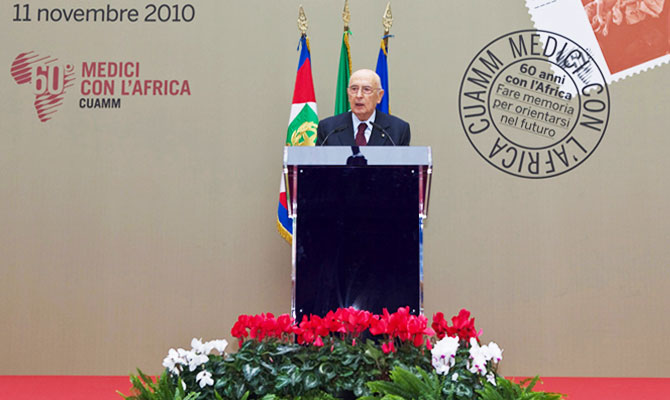The structural decline in official development aid (which reached a historical low of 0.13% of GDP in 2002), the complexity of international cooperation mechanisms, and the necessity of recruiting and training the finest individuals to work with CUAMM in Africa has led to a need for more research, planning and public awareness-raising initiatives. In order to meet these challenges Doctors with Africa CUAMM undertook an internal restructuring, setting up human resources and communications and marketing divisions tasked with working alongside the projects division.
In 2002, the organization officially changed its name to “Doctors with Africa CUAMM” to underline its commitment to work not just for, but with, its African partners.
Alongside the launch of some important projects including the reconstruction of Yirol Hospital in South Sudan in 2006, Doctors with Africa CUAMM continued training local health care providers as an essential part of its overall strategy. Thanks to CUAMM’s economic support and partnership with Mozambique’s University of Beira, thirteen Mozambican students were awarded degrees in medicine there in 2007.
Between 2000 and 2013, increasing numbers of volunteers – more women than men in recent years – left to lend their service in areas of need in Angola, Ethiopia, Kenya, Rwanda, South Sudan, Tanzania, Uganda and Sierra Leone.
In 2010, Doctors with Africa CUAMM celebrated its 60th anniversary with the launch of the “Mothers and Children First” program, which aims to improve maternal and neonatal health in Angola, Ethiopia, Tanzania and Uganda.
In 2015, more than 190 individuals, both from Italy and elsewhere, chose to partner for a period of time with Doctors with Africa CUAMM in our organization’s ongoing effort to improve the health of some of the most vulnerable communities in Africa.
CUAMM now maintains a presence in seven African countries:
and partners with 14 hospitals, 35 districts, 3 nursing and midwifery schools and 2 universities in Africa.
Beira, Mozambique. Don Dante Carraro (Director of Doctors with Africa CUAMM) and some of the medical students graduated in June 2015.
Click here to see photos from Doctors with Africa CUAMM’s long history
| ⇐ 1980s – 1990s |




